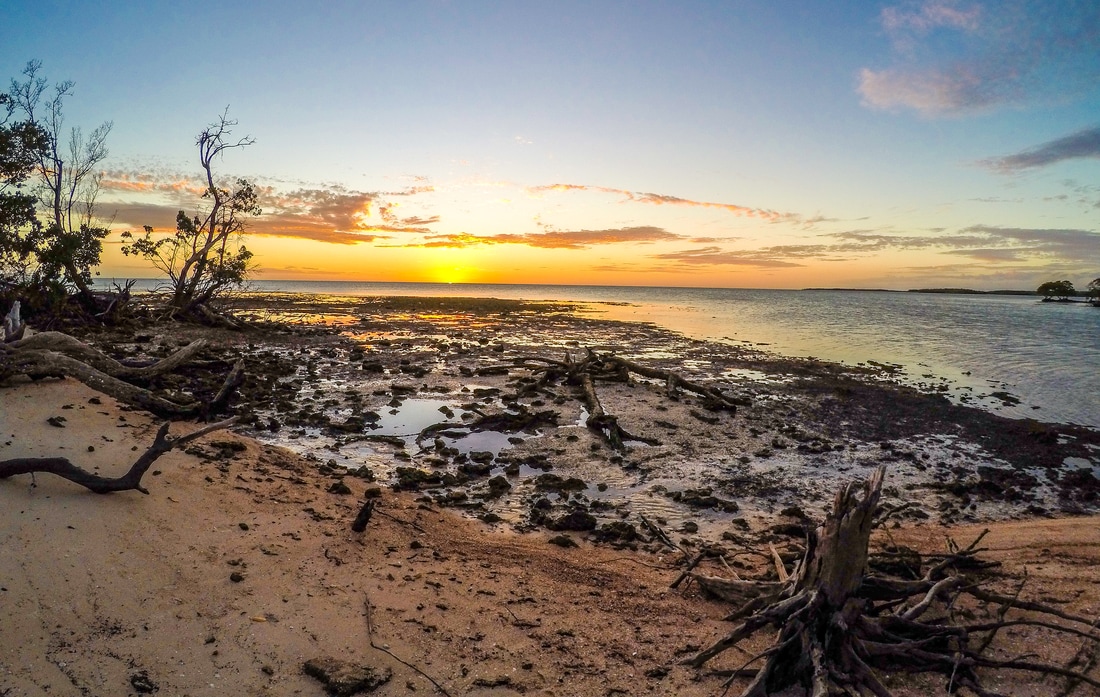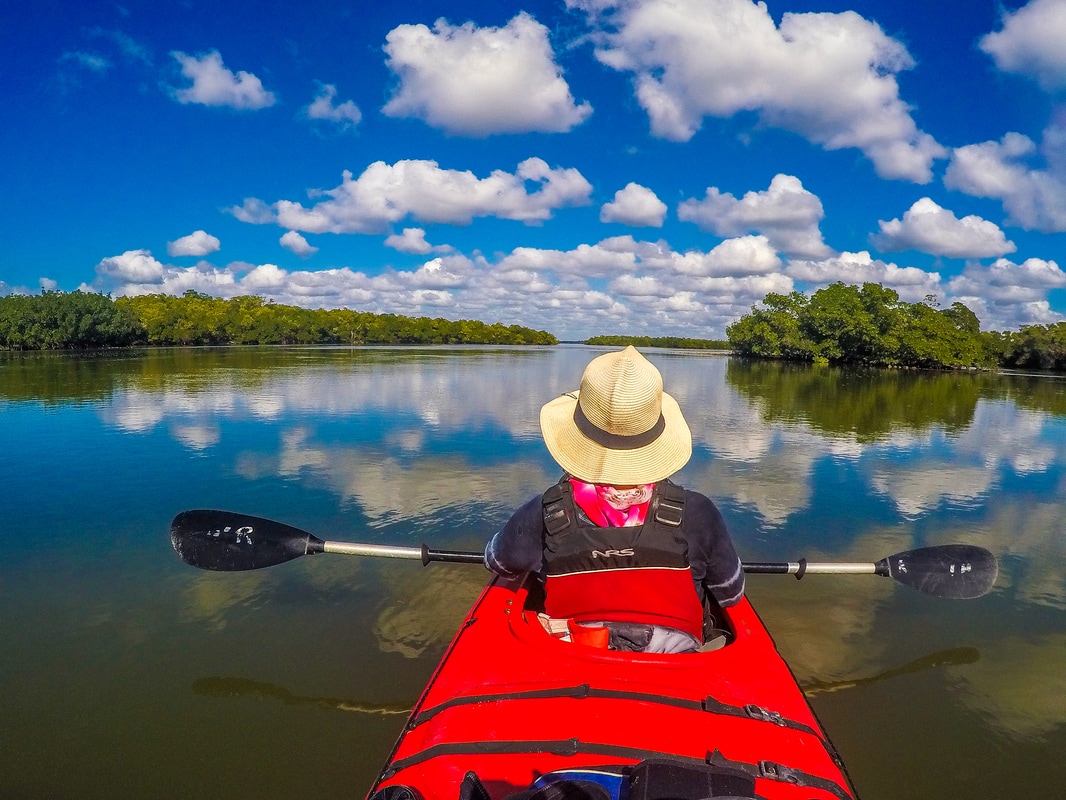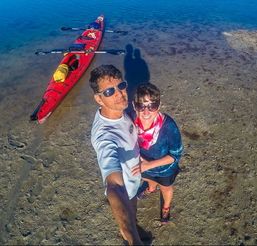Story & photos by Jordan Snyder and Martina Sestakova
It was our second day out and we had over six miles of open water traverse ahead of us. We clawed our way directly into oncoming waves, wind, and a flood current as the elements battled to restrain us. Waves washed over our 21’ tandem sea kayak as it crept across the Gulf of Mexico, making no more than two miles per hour of slow and challenging forward progress.
We were paddling from Jewel Key to Pavilion Key in the 10,000 islands area of the Everglades National Park, Florida. This was our first wilderness adventure in the third-largest national park in the lower 48 states.
Our plan was to explore as much of these pristine waters as possible, backcountry camp on the uninhabited keys, and gather water samples for microplastic analysis. Partnering with Adventure Scientists, we have gathered over 30 water samples while under sail in the Chesapeake Bay and Atlantic Ocean and thought that data from this National Park could be a valuable addition to their Worldwide Microplastics Database. We wanted to help fill a tiny gap on Adventure Scientists’ large and detailed global map with our results, especially since our location was so sensitive to water pollution.
In the Everglades you are surrounded by a unique and beautiful marine ecosystem that relies on clean water for survival and prosperity. The enormous population of fish, dolphins, native and migrating waterfowl, the largest mangrove system in the western hemisphere, and the threatened manatee all depend on pollution-free water.
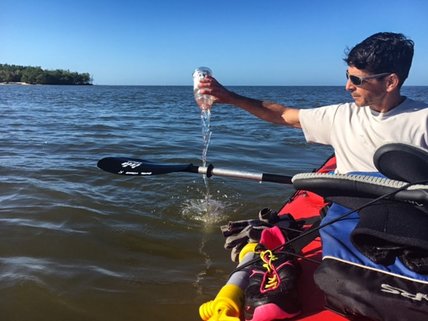 Jordan collecting a water sample in Rabbit Key Pass
Jordan collecting a water sample in Rabbit Key Pass
We collected one-liter water samples in varied settings ranging from deep main channels to shallow, tranquil coves. We quickly learned that sampling at water level from a kayak was much easier than off the bow of our 31’ sailboat. We followed Adventure Scientists’ simple protocol including not wearing fleece (comprised of thousands of microplastic fibers), which could contaminate the data.
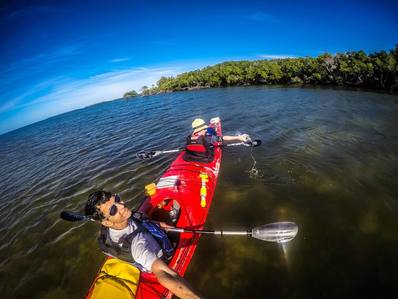 Martina collecting a water sample on the south side of Jewell Key
Martina collecting a water sample on the south side of Jewell Key
Martina took one sample in the center of Chokoloskee Bay moments after a close encounter with a pair of dolphins. We could see them in the distance heading directly towards our kayak. They seemed to be feeding on fish. We held our location as they approached closer and closer. Sitting motionless and in silence I prepared my action camera to capture whatever was about to happen. Two dolphins swam and splashed within a few feet of our kayak as they gracefully trapped a mouthful of fish. Witnessing this grace and natural beauty up close solidified for us the importance of clean water here and everywhere.
We added purpose to our Everglades kayaking adventure by planning our route to include unique collection spots. We hope no microplastic pollution is found in the pristine wilderness of Everglades National Park!
Jordan Snyder is a lifelong explorer and sailor who runs expedition style multi-day sailing adventures and photography workshops aboard his boat Base Camp II. Martina Sestakova is a textile/pattern designer who runs her company RADOST out of Bethesda, MD. Martina loves traveling, photography, and art, which inspire her design work. Learn more about Base Camp Sailing and their sailing adventures while collecting water samples on the Chesapeake Bay.

